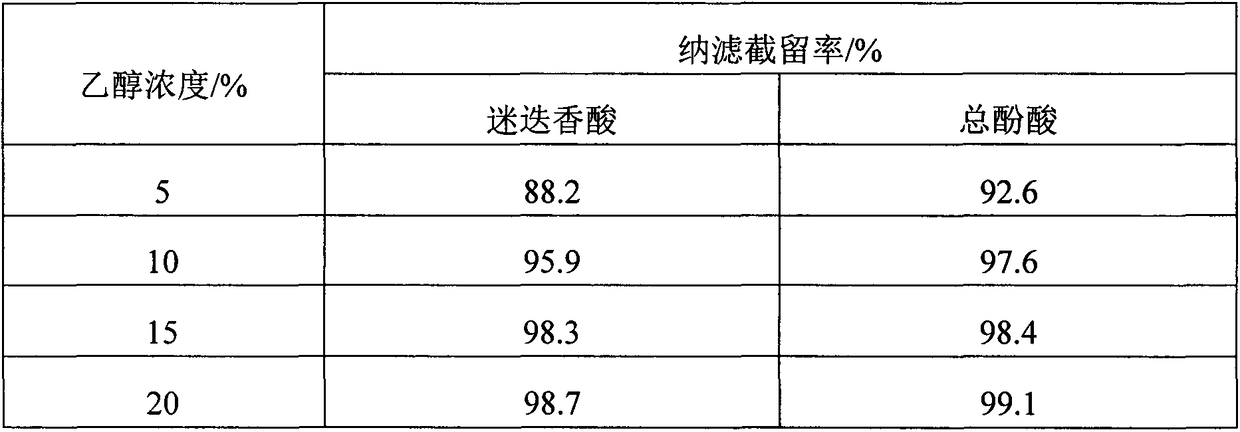A method for efficiently enriching phenolic acids in traditional Chinese medicine by nanofiltration
A technology of nanofiltration and phenolic acid, which is applied in the field of medicine, can solve the problems of membrane pore clogging, low separation efficiency, shortening the service life of nanofiltration membranes, etc., and achieve the effects of increasing service life, reducing adsorption effect and improving membrane fouling
- Summary
- Abstract
- Description
- Claims
- Application Information
AI Technical Summary
Problems solved by technology
Method used
Image
Examples
Embodiment 1
[0018] Example 1: Nanofiltration enrichment of p-coumaric acid in reed rhizome
[0019] The pKa value that adopts potentiometric method to detect p-coumarin acid (concentration reference p-coumaric acid concentration in reed rhizome extract) is 5.41, and the solution pH value range when it dissociates 50%~90% is 5.41~6.63; Adopt 10 % sodium hydroxide aqueous solution regulates the pH value of the reed rhizome extract to 5.41~6.63; Separation pressure (0.5, 1.0, 1.5Mpa) was used as the investigation index, and polyamide composite nanofiltration membrane was used to separate coumaric acid and total phenolic acid by nanofiltration, and the response value of the cut-off rate was selected to screen the nanofiltration separation parameters. In the nanofiltration membrane, under the conditions of pH 6.52 and operating pressure of 1.12Mpa, the rejection rates of p-coumaric acid and total phenolic acids were 72.3% and 85.6% respectively, and the loss of p-coumaric acid was obvious; und...
Embodiment 2
[0023] Example 2 Nanofiltration Enrichment of Phenolic Acids in Salvia Miltiorrhiza Extract
[0024] Adopt spectrophotometry to detect that the pKa value to rosmarinic acid (concentration reference salvia miltiorrhiza extract) is 4.01, and the solution pH value range when it dissociates 50%~90% is 4.01~4.96; Adopt 10% Sodium hydroxide aqueous solution adjusts the pH value of the reed rhizome extract to 4.01-4.96; adopts the corresponding surface analysis method to separate the The pressure (0.5, 1.0, 1.5Mpa) was used as the investigation index, and the sulfonated polyethersulfone nanofiltration membrane was used to separate rosmarinic acid and total phenolic acid by nanofiltration, and the response value of the cut-off rate was selected to screen the parameters of the nanofiltration separation. In the 450Da nanofiltration membrane, the pH value is 4.77, and the operating pressure is 1.08Mpa, the retention rates of rosmarinic acid and total phenolic acid are 82.2% and 86.1% res...
PUM
 Login to View More
Login to View More Abstract
Description
Claims
Application Information
 Login to View More
Login to View More - R&D
- Intellectual Property
- Life Sciences
- Materials
- Tech Scout
- Unparalleled Data Quality
- Higher Quality Content
- 60% Fewer Hallucinations
Browse by: Latest US Patents, China's latest patents, Technical Efficacy Thesaurus, Application Domain, Technology Topic, Popular Technical Reports.
© 2025 PatSnap. All rights reserved.Legal|Privacy policy|Modern Slavery Act Transparency Statement|Sitemap|About US| Contact US: help@patsnap.com



